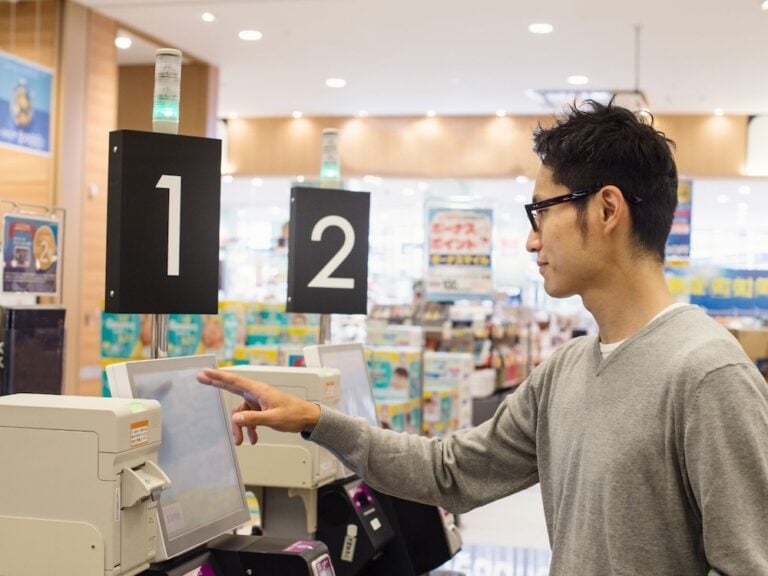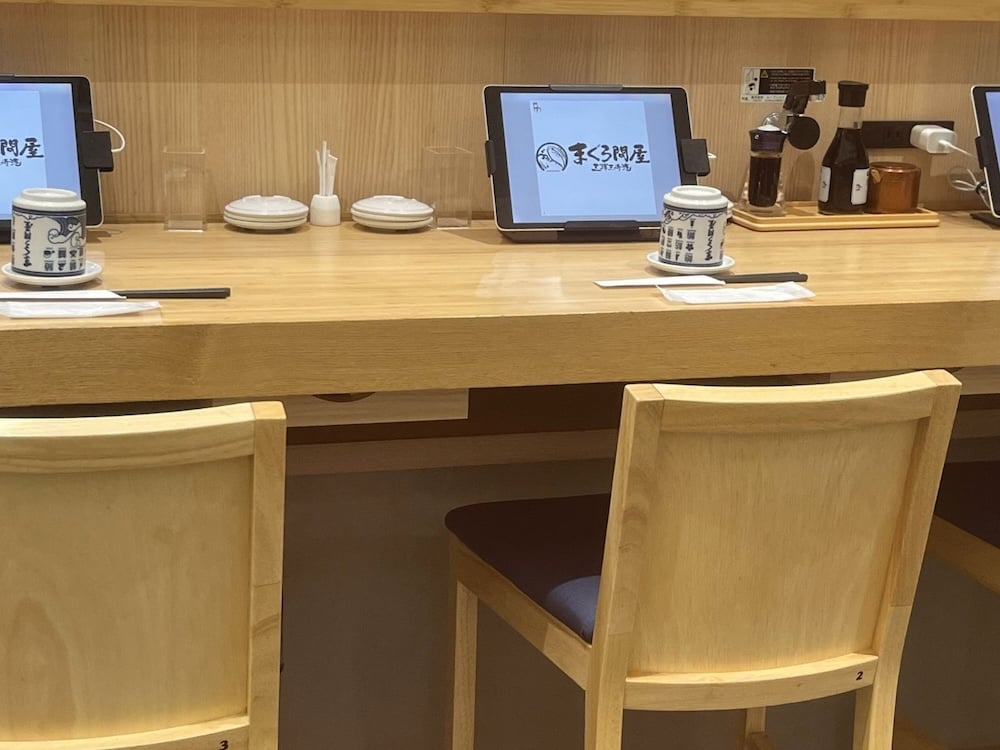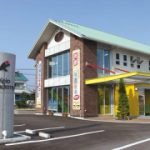
While jokes still abound about the use of fax machines in Japan, the country has embraced innovative practices to reduce tedious and manual-based jobs. As these new methods increase efficiency, it’s important to consider the impact on those who rely on such jobs for their income. Ideally, any staff affected by these changes can be redeployed to add value in other areas within their companies.
The COVID-19 pandemic forced many retail businesses to rethink their customer interaction, aiming to reduce the need for direct customer contact. In Japan, the post-pandemic labor shortage has further strengthened the case for increased automation in the industry.
Wait staff replaced with electronic tablets and robots
Many chain restaurants have replaced the waitstaff who take orders at a customer’s table with electronic tablets. Customers can order all their food and drinks through these devices. Some restaurants have even introduced robots to deliver food to tables. Kids especially enjoy listening to the robot’s jingle and watching it move around the restaurant. However, tablets and robotic solutions aren’t a good fit for high-end, posh establishments.

Self-Payment at Checkout
Many restaurants and shops have installed small machines connected to the front of the register, allowing customers to process their payments directly without clerk involvement. While this may not necessarily speed up the payment process, it reduces the scope of work for store staff, making the job simpler and easier to train replacements.
One of the supermarkets I often visit has gone completely self-service and cashless, accepting only credit cards or payment apps. By eliminating cash handling, the supermarket reduces a significant amount of work for its staff and streamlines its operations. This change also eliminates the need for cash pickups and deliveries, saving time and resources for various players involved in the cash handling process.
Uniqlo Clothing Store Self-Checkout
While most self-checkout options at supermarkets simply shift the job of scanning QR codes from employees to customers, Uniqlo has taken a different approach. They use radio frequency identification (RFID) chips embedded in every price tag. The self-checkout machine is equipped with an RFID reader that accurately detects and records the prices of all the items in the checkout bin. Customers simply drop their items into the bin, and the machine totals up the cost. Payment is then made using the payment terminal. Staff are available to assist if needed. This fast, dependable, and painless process offers a complete solution for seamless shopping.
Suica Prepaid Card
Suica is a prepaid e-money card used for travel and shopping in Japan. With Suica, there is no need to buy paper tickets from vending machines. Simply touch your Suica card to the ticket gate, and the fare is automatically deducted. Suica is accepted not only on JR East trains but also on subways and buses. Refer to the Suica Map for a list of transportation systems that accept Suica.
Additionally, Suica can be used to pay for drinks from vending machines and on trains. You can even buy a newspaper at the station kiosk without the need for coins. The Suica app can be downloaded to your smartphone, smartwatch, or fitness band, such as Fitbit, allowing you to tap these devices on the ticket gate for easy access. Suica can also be linked to your bank account (only for Japanese domestic banks) for easy reloading. How cool is that!
Believe it or not, before the introduction of Suica, only paper tickets and commuter passes were available. As you exited the ticket gate, an attendant would collect your ticket, and if necessary, you would pay any additional fare to them. During rush hour, these attendants were incredibly busy! It’s hard to say where all those workers went, but there were thousands of them managing tickets and passengers each day.
Hotel Check-In
Many mid-range hotels have replaced front desk staff with electronic tablets for check-in. Guests log into the tablet using their reservation details to receive their check-in information. This cost-effective solution is increasingly popular among budget-conscious hotels. While you might not experience this setup at four- or five-star hotels, don’t be surprised to find it at your local budget accommodations.
QR Codes
A QR code (Quick Response code) is a matrix barcode that can be read using a QR scanner. Composed of black squares on a white background, it can store a variety of information such as URLs, text, or other data. When scanned, the QR code directs the user to the encoded information, often a website or an application. While QR codes are not inherently labor-saving, they are widely used in Japan to provide manuals, directions, discounts, and other information that might otherwise require printed materials.
Recently, there was a major outage of the Tokaido Shinkansen Bullet train. Service was disrupted from early morning and wasn’t restored until the following day, causing major inconvenience for thousands of travelers. The stations became chaotic as customers looked for updates on train availability. To manage the situation, station staff extensively used QR codes to direct customers to the latest information, as it was impossible to provide individual updates to everyone.
City/Ward Silver Centers
As mentioned, Japan has a rapidly aging population combined with an insufficient number of workers to replace those retiring. To address this, each prefecture operates Silver Human Resource Centers, administered by cities and wards. These centers offer temporary, short-term, or light work opportunities suited to older adults, including retirees, which aligns with their lifestyles.
By working in roles such as computer data entry, pruning and gardening, classroom instruction, and other tasks, older individuals can stay active, contribute to their communities, and maintain a sense of purpose. These centers not only promote the health and well-being of older adults but also play a vital role in improving community welfare and revitalization. Redeploying retired workers in this manner is an efficient way to utilize underused resources while continuing to deliver essential services to the community.















